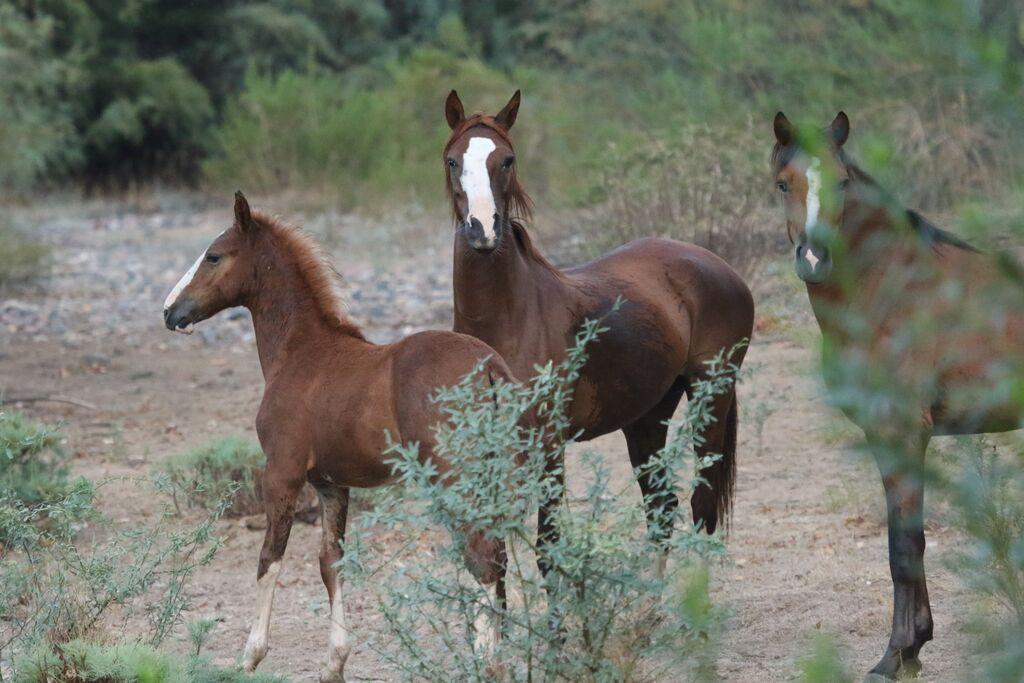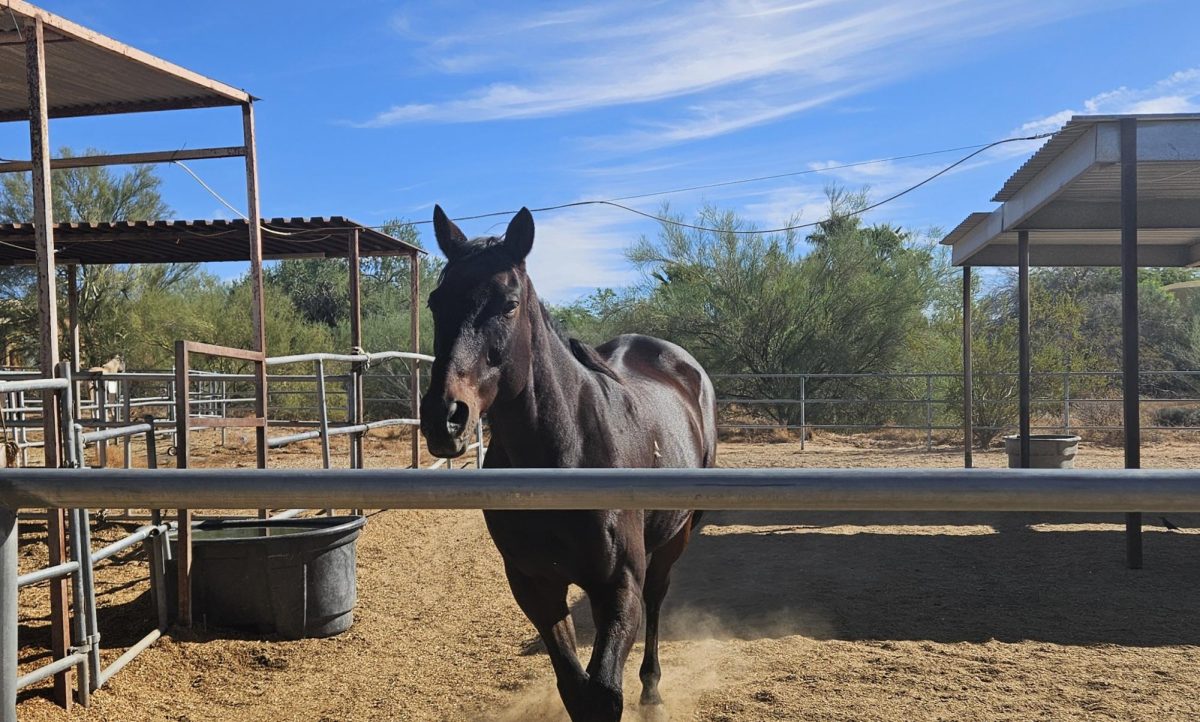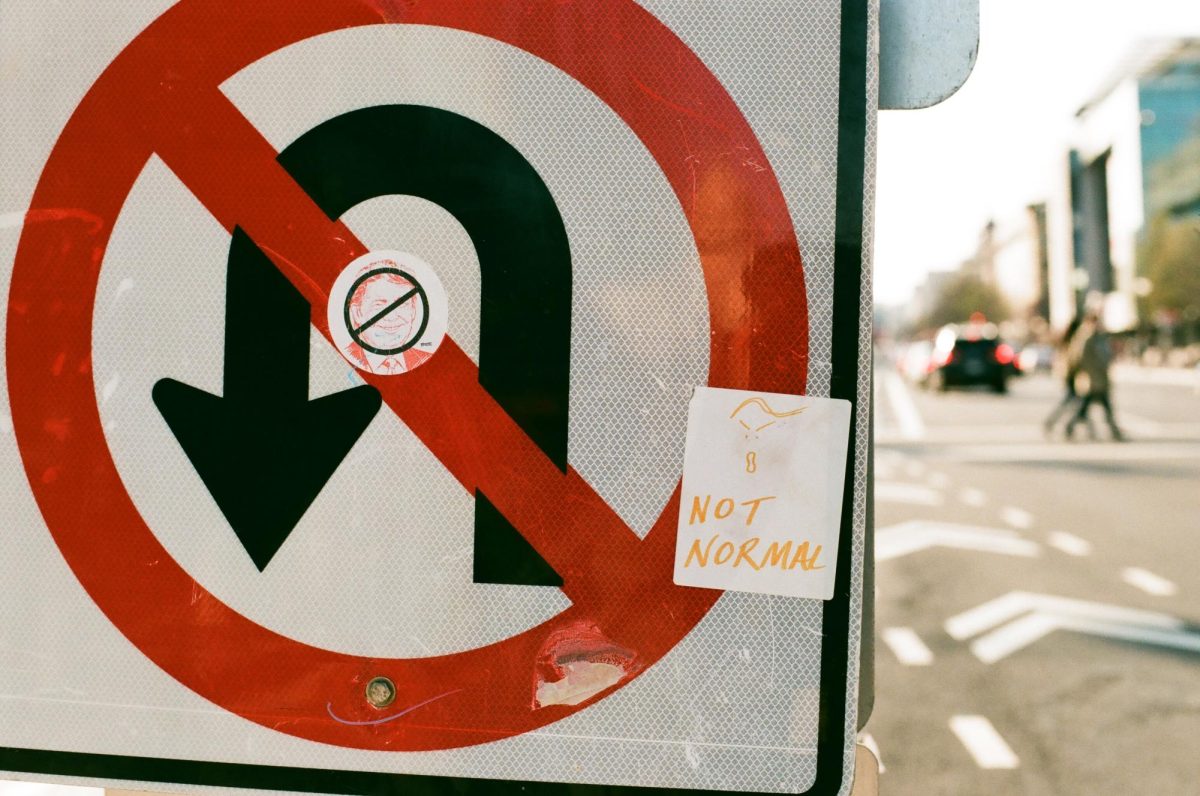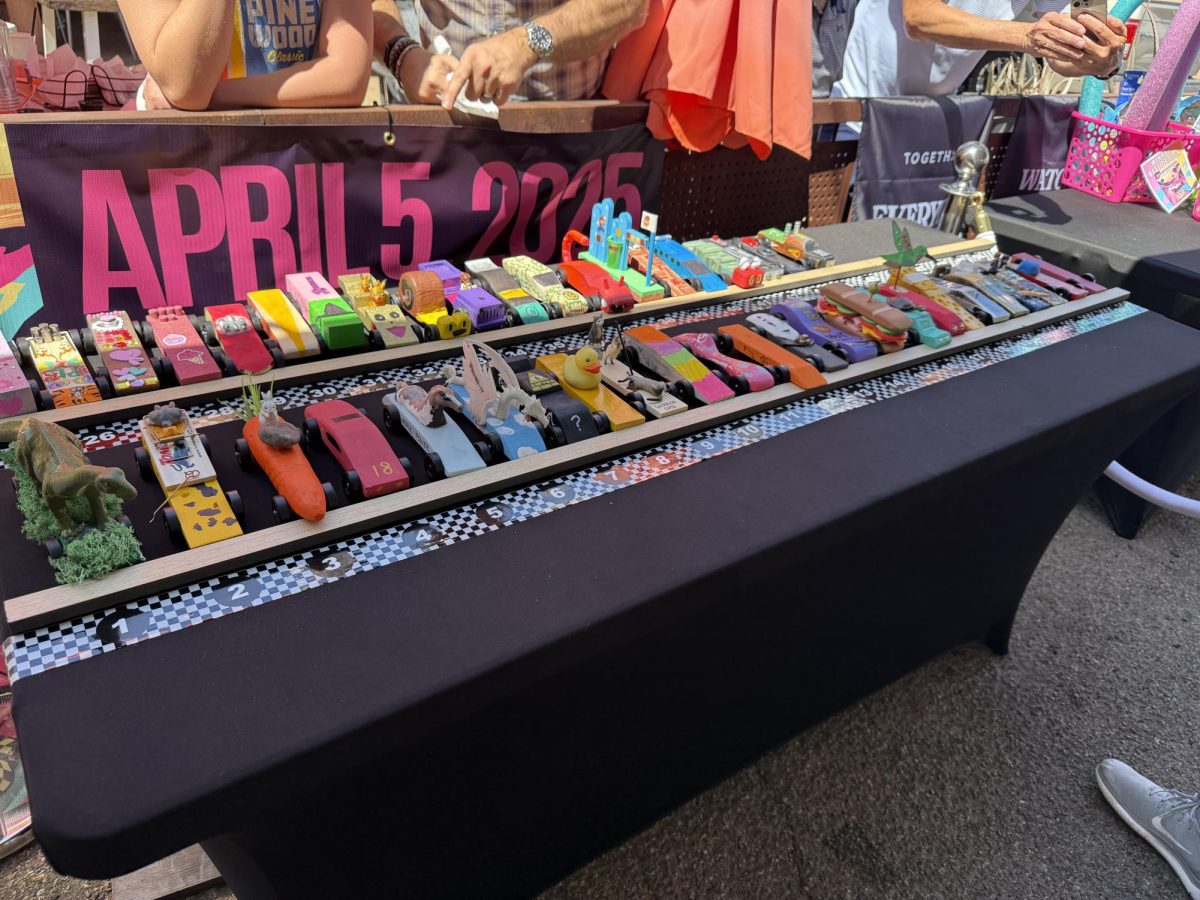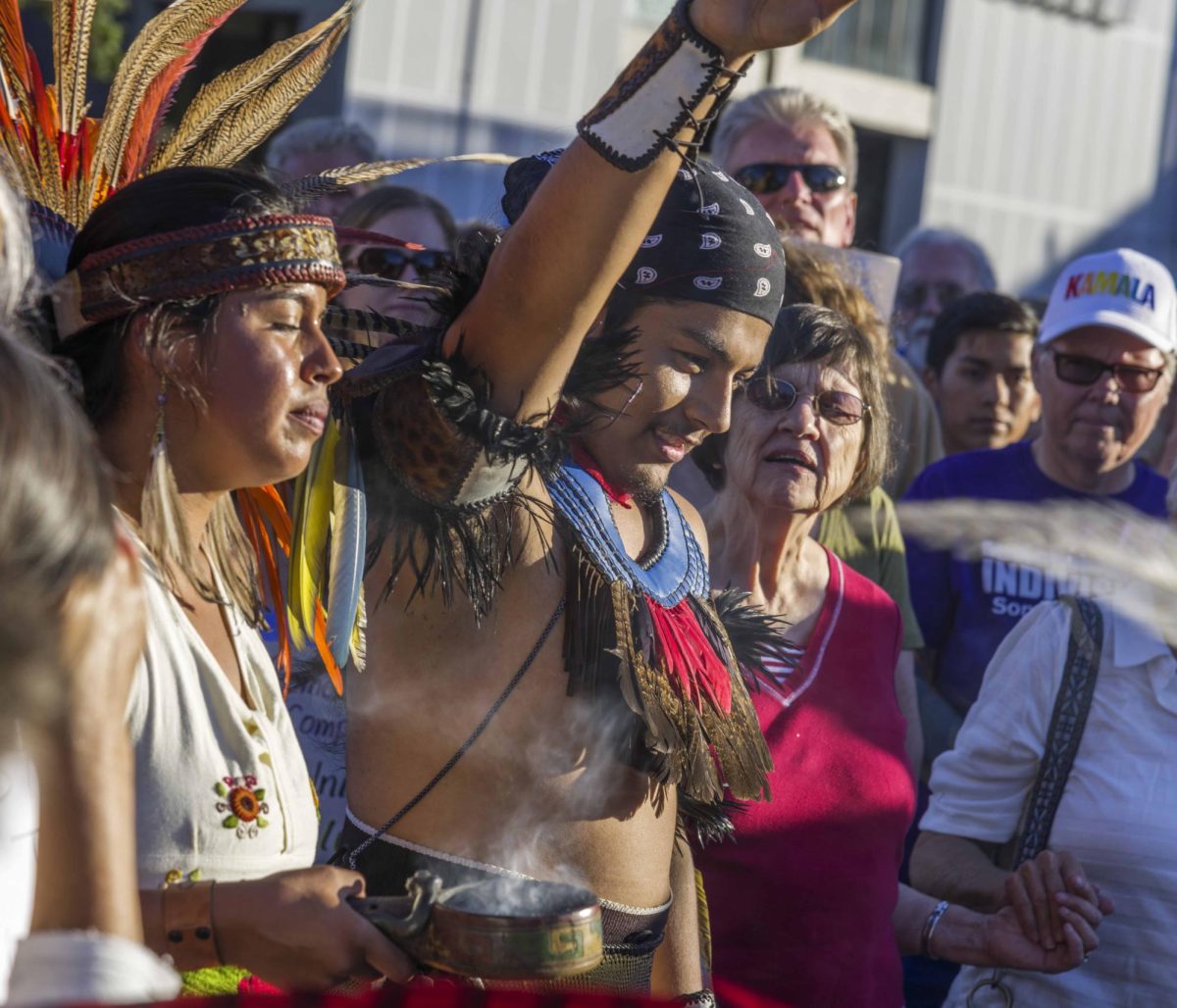A heated debate over the Salt River Horse “wild” herd has boiled over into a formal lawsuit against the U.S. Forest Service.
The lawsuit filed by the Center for Biological Diversity, a coalition of conservation groups are suing over what they claim are “hundreds of unowned horses” that threaten the ecosystem of the Tonto National Forest.
But advocates for the Salt River Wild Horses herd passionately argue that the horses existence are sustainable, non-detrimental to the ecosystem and the horses are being blamed for what are human-caused ecological issues.
Northeast Valley News spoke to representatives from both organizations—but tensions have led to longstanding battles and reportedly claims of libel, conspiracy theories, harassment and even alleged death threats.
Ambiguous definition of “native” at center of debate
If you’re an Arizonan there’s a good chance you’re familiar with the Salt River Herd, they live on the 20,000 acre allotment known as the Lower Salt River Recreation Area. This is an incredibly popular area for all sorts of outdoor activities but most famously known for summertime river tubing, which attracts Arizonans every year looking to cool off from the desert heat.
The Salt River “wild” Horses herds are a common site when tubing down the Salt River, they’re incredibly comfortable around humans, some will even approach humans.
They are sometimes referred to as the “wild horses” which is one of the distinctions to the ongoing heated debate.
Some Salt River herd advocates would cite the horses historical presence in America as enough to classify them as “native” as they were introduced to the ecosystem centuries ago, before the United States was even a country.
But the information on this particular distinction is both diverse and in many cases, unsolidified speculation as to the actual origin of the Salt River Horses.
Claims of the herds range from “the herds are descendants of horses Spanish explorers and missionaries brought to the Southwest in the 16th century and where many were left in Arizona when Mexico severed ties with Spain in 1821, since then the herds have lived independently.”
Other claims include, from at least one environmental online organization www.treehugger.com that a species is only classified as “native” if its presence in the region is the result of natural evolution.
Adding to the debate, the Animal Welfare Institute states on its website with regard to North American wildlife that, “the precise date of origin for the genus Equus is unknown, but evidence documents the dispersal of Equus from North America to Eurasia approximately 2-3 million years ago and with a possible origin at about 3.4-3.9 million years ago.
Therefore the argument for the Salt River Wild horses being “native”—at least for the Salt River horse advocates—would likely begin and end at the Animal Welfare Institutes contention that evidence shows their 3.9 million years in existence.
Other environmentalist groups claim that many of the Salt River Herd numbers are actually from horses who much more recently escaped from tribal lands and are now essentially abandoned livestock.
Salt River “herds” population is a problem according to organization filing lawsuit
Robin Silver, Co-Founder of the Center for Biological Diversity, has spearheaded the coalition suing the U.S. Forest Service and recently spoke with Northeast Valley News.
“It’s a problem that’s becoming pervasive throughout the entire west – The population explodes in tribal lands, the horses invade the surrounding lands, and then the tribes don’t want the horses back because they’re already overrun,” Silver said.
Silver explained details of their position with regard to a “horse invasion.”
“There was no horses there (The Lower Salt River), that was a grazing allotment, it was called the Goldfield allotment, and then in the 70s they shut down the allotment. At that time the allotment itself could only sustain 12 cows without doing damage. Once the permittee was kicked out, nobody was maintaining the fencing and nobody was pushing the horses back onto Indian Community Lands, and so then the horses basically invaded The Tonto. The Tonto was going to remove them and then that’s when the advocates got involved.”
The debate over the Salt River Herd is nothing new, lawmakers and horse advocates have come to compromises in the past, but to no avail and now the federal government will be involved in an extensive lawsuit filed by a group of conservationists based here in Arizona.
Led by the Center for Biological Diversity, the group is suing the U.S. Forest service over “failing to protect the Lower Salt River Recreation Area from hundreds of unowned horses that threaten endangered species habitat.”
One study reported information taken from data by the Arizona Forage Assessment a departmental survey within the University of Arizona and the U.S. Department of Agriculture that areas could adequately sustain a population of no more than 44 horses. The Arizona Forage Assessment of the Lower Salt River Area failed to document any perennial grass in the area. The horses are known to survive primarily off river eelgrass.
“A lack of perennial grass – That’s why the horses are living off algae, horses have to eat – they’re girdling trees, none of us have ever seen that before, they’re girdling the Palo Verde trees,” Silver said.
Arguments from advocates of the Salt River Horses paint a different picture for the lawsuit motivation and herd control
The Salt River Wild Horse Management Group, a non-profit dedicated to protecting the horse herd, have made agreements in the past to lower the herd population through birth control, which according to the group’s founder, Simone Netherlands, is doing enough to keep the population under control.
In 2019 her group plead to get the herd population down from 450 to 250 through the use of birth control.
“There’s historic evidence of these horses from like 1890, and there’s photographic historic evidence from 1957. In that exact area, these horses have been here for centuries, they have evolved with that ecosystem, and in actuality that ecosystem is thriving,” Netherlands said.
The information from the Animal Welfare Institute would appear to support Netherland’s contention that the horses have not only been “here” for centuries, but that no evidence exists for their genus (Equus’) precise date of origin
“Everything in that ecosystem lives in balance, every species has a positive and a negative influence on the environment. Saying ‘boo hoo look at how bad the horses are for the environment’—really are crocodile tears—because they know that the horses are not ruining the environment—it’s the 8 million yearly visitors to the Tonto National Forest that are making a mess of it.”
Netherlands places the onus on human beings that visit the areas with regard to the real danger to the environment.
But she has an especially strong disdain for the Center for Biological Diversity and accuses the organization of profiting off lawsuits.
“It’s propaganda because they make money off lawsuits, they actually win money with lawsuits and that’s what that entire organization (The Center for Biological Diversity) is based upon,” Netherlands said.
Netherlands has been involved with the Salt River Horses protection for many years and contends that the herds aid the surrounding environment.
“Wild horses help the environment because they are non-ruminant. Horses have only one stomach, their food barely gets processed at all so it contains live seeds. The mesquite trees grow where their manure is, we document this every year. The mesquite tree forests are actually cultivated by the horses,” Netherlands said.
“It’s the people who are ruining the environment, it’s so ridiculous to worry about the horses, they have lived there for centuries, they’re not harming anyone, and they’re not costing anyone a dime.”
Netherlands also cites an alleged inhumane outlook for the future of the herds if the lawsuit is successful.
Her website states, “the (CBD) lawsuit seeks to overturn the will of the people in Arizona and halt the intergovernmental agreements which would result in overpopulation and possible starvation of the herd, subsequently, their removal.”
Netherlands contends that Salt River Wild Horse Management organization has successfully managed and cared for the herd and is completely paid for through private donations.
She told Northeast Valley News that the website also contains information and documentation of the herds. Netherlands recently gained access to a photo (and has shown the picture to Northeast Valley News) the image, that, to her knowledge, has not been publicly released was sent to her anonymously. The photo is of a man standing over a dead horse and smiling—the man, according to Netherlands—is one of the plaintiffs listed on the lawsuit filed by the Center for Biological Diversity.
“Smiling next to a dead horse, these people hate wild horses, they hate them, and it’s that hate and focus on removing wild horses all across the nation that drive them. Their drive and their negativity to the horses is all greed motivated,” Netherlands said.
Northeast Valley News cannot confirm the source of the anonymous print nor the individual shown in the photo and declined publishing the picture.
Aside from the contentious debates, Netherlands points to progress from her organization.
“Back in 2015 when the Tonto wanted to remove the horses, we stepped up and we wrote a proposal. Our proposal included humane fertility control – there is a good and humane way to manage wild horses where they don’t outgrow their boundaries, where they’re in balance with the habitat, but where the public can still see and enjoy them, and that’s where we are at today, —we’ve made amazing progress. The public loves them and the U.S. Forest Service makes money off them because tourists from all over the world come to see them, its’ a win-win for everybody,” Netherlands said.
Two organizations on opposing ends: a lawsuit, accusations, veiled threats, government officials alleged favoritism and dueling claims of “falsehoods”
Silver, the spokesperson for the Center for Biological Diversity, the group that spearheaded the lawsuit, says that the Salt River Wildhorse Management group, namely Simone Netherlands, is supplementing food for the herd in times of draught to prevent starvation.
But this is a claim that Netherlands does not appear to deny as detailed on her site:
“Arizona has had a one of the driest winters in history and we are in a record breaking drought with no relief in sight. While it is normal for wild horses to have a skinny season and a fat season, this drought has caused extreme conditions and extreme hardship on the Salt River wild horses, which we have been monitoring closely.
“The lack of ground cover cannot be blamed on the horses themselves; it has very little to do with horses and everything to do with the lack of precipitation. The horses have not eaten it all, all of the grass died as soon as it came up this year as a result of drought. (There will be people who want to blame the horses, there always are.)
“The concept of managing wild horses humanely includes the preventing of unnecessary suffering when and where possible. From the very beginning we have taken full responsibility for the Salt River wild horses and we will prove that we are in it for the long haul.”
Both the Center for Biological Diversity and The Wildhorse Management Group have claimed that statements by the opposing organizations and their spokespersons are baseless and incorrect. Accusations of favoritism by government officials and withholding equitable access to horses that are placed for auction are reported. Both organizations recount heated exchanges—much of the rhetoric is vitriolic and can appear threatening.
Two organizations with people who clearly do not like each other.
At the core of it all…a herd of Salt River Wild Horses.


